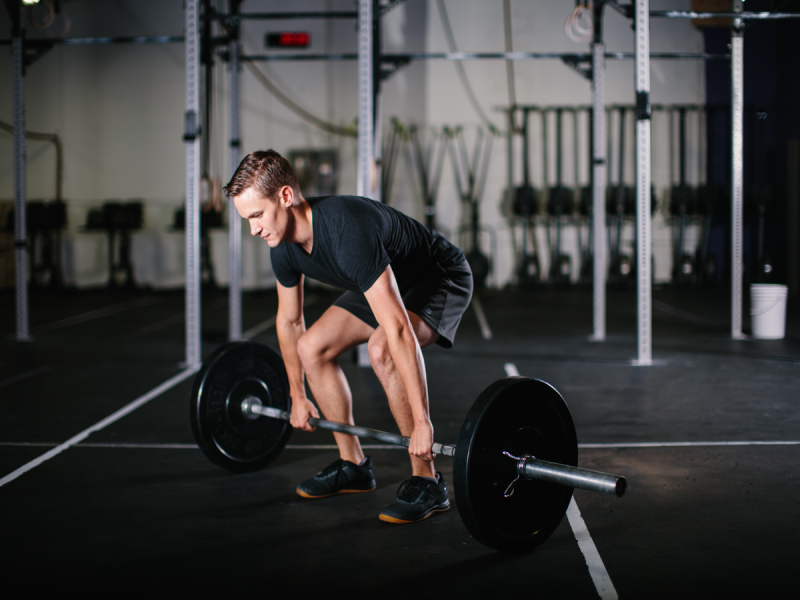Are you ready to master the art of barbell squats? This powerful exercise can be a game-changer in your fitness routine, targeting multiple muscle groups and helping you build strength and endurance. Whether a beginner or a seasoned athlete, understanding proper technique and following essential tips will ensure you get the most out of barbell squats.
Barbell Squats: The Technique
Barbell squats, often referred to as the “king of all exercises,” are a compound movement that engages various muscle groups in lower body, core, and even the upper body to some extent. Before we dive into the workout, let’s break it down step by step:
Warm-Up: One should start with a proper warm-up to prepare their body for the exercise. A few minutes of light cardio and dynamic stretches help increase blood flow as well as flexibility.
Hip and Shoulder Mobility: Good hip and shoulder mobility are essential for maintaining proper form. Spend some time working on these areas during warm-up.
The Setup:
- One should stand with their feet shoulder-width apart.
- Place the barbell on upper back, just below the neck, and grasp it with an overhand grip wider than shoulder-width.
- Lastly, one should ensure that their wrists are straight.
Body Position: Keep your chest and back straight throughout this workout. Knees should track in line with feet. Engage your core to stabilize your spine.
The Squat:
- Initiate descent by pushing your hips back and bending knees.
- Lower your body as far as possible, ideally until your thighs are parallel to the ground.
- Focus on maintaining a neutral spine.
Breathe: Inhale as you lower your body and exhale as you push back up. Proper breathing helps stabilize your core during this movement.
Drive Through Your Heels: Push through your heels to stand back up, keeping your chest up and your back straight. Avoid letting your knees cave inwards.
Barbell Squats for Beginners
If you are new to barbell squats, starting with right technique is crucial. Begin with bodyweight squats to practice this movement pattern. As you gain confidence, gradually introduce the barbell with lighter weights. Working with a qualified fitness trainer or coach can also incredibly benefit beginners, ensuring one performs this exercise safely as well as effectively.
Barbell Squats for Athletes
For athletes, this type of squatting is a fantastic addition to training. They help improve strength, power, along with explosiveness – all crucial for sports performance. To take this squatting exercise a level up, consider incorporating overhead squats. This variation requires excellent mobility, balance, and core strength as you hold the barbell overhead while performing squats.
Proper Barbell Placement
Proper placement of the barbell on your upper back is vital. Avoid resting it directly on neck, as this can be uncomfortable and may lead to injury. Instead, aim to position it slightly lower on upper back, across your trapezius muscles. Use a pad or a folded towel to cushion this barbell if needed.
Gradual Weight Increase
While it’s essential to challenge yourself, progress is equally crucial. Only lift heavy weights if you are ready. Focus on perfecting form as you progressively increase the weight over time. This approach will help you avoid injury while ensuring consistent progress.
Achieving Your Fitness Goals
Barbell squats are a versatile exercise tailored to your fitness goals. Perform squats in a lower rep range with heavier weights so that you build muscle along with strength. On the other hand, if you want high endurance with overall fitness, incorporate higher rep sets with moderate weights. Consistency is key. Make this workout a regular part of your fitness routine, and you’ll begin to see the benefits in no time.
The Benefits
Barbell squats offer a myriad of benefits beyond building muscle and strength. They can also enhance overall fitness levels, making them an excellent addition to any workout routine. Squats promote functional fitness by engaging multiple muscle groups simultaneously, helping you perform everyday activities more efficiently. Moreover, these workouts boost metabolism, making them a valuable tool for weight management. The core-strengthening aspect of squatting contributes to improved posture, reducing the risk of back pain. With consistency and proper technique, barbell squats can be transformative, helping you achieve your fitness goals and unlock your full potential.

